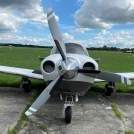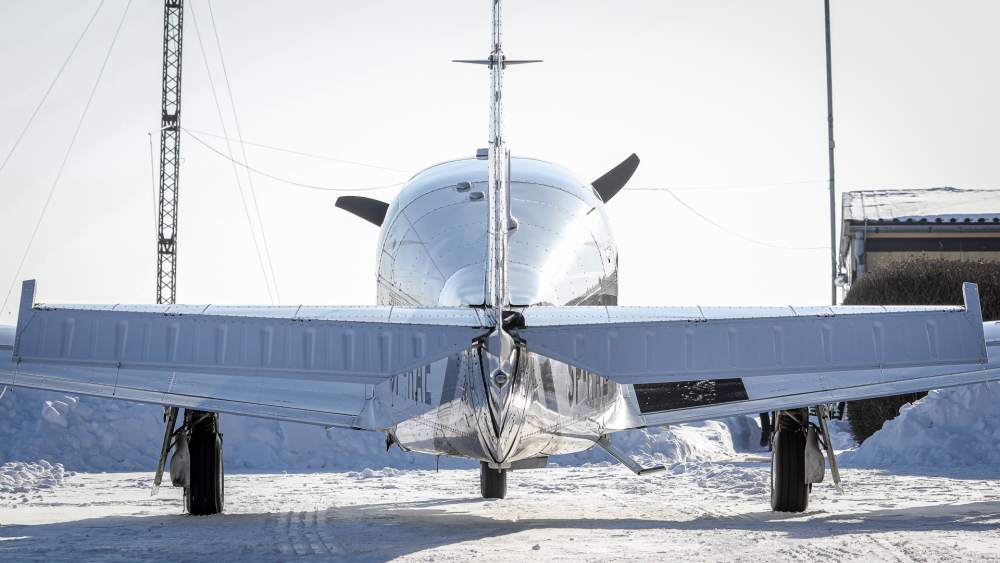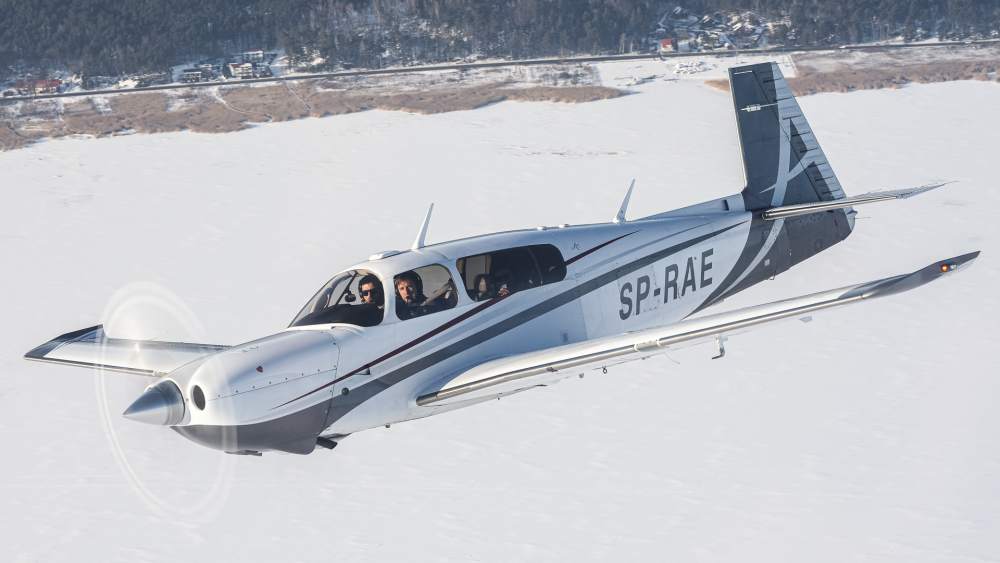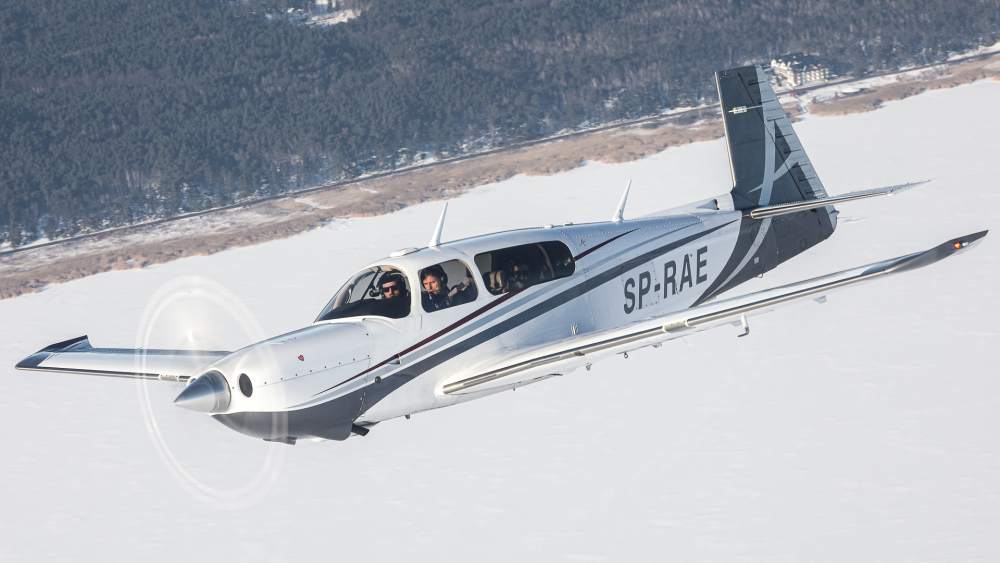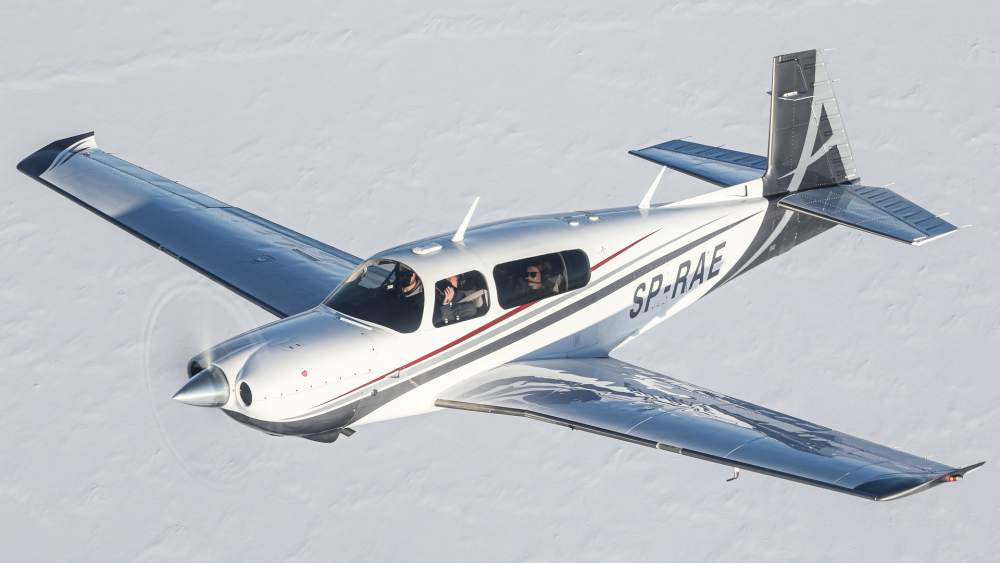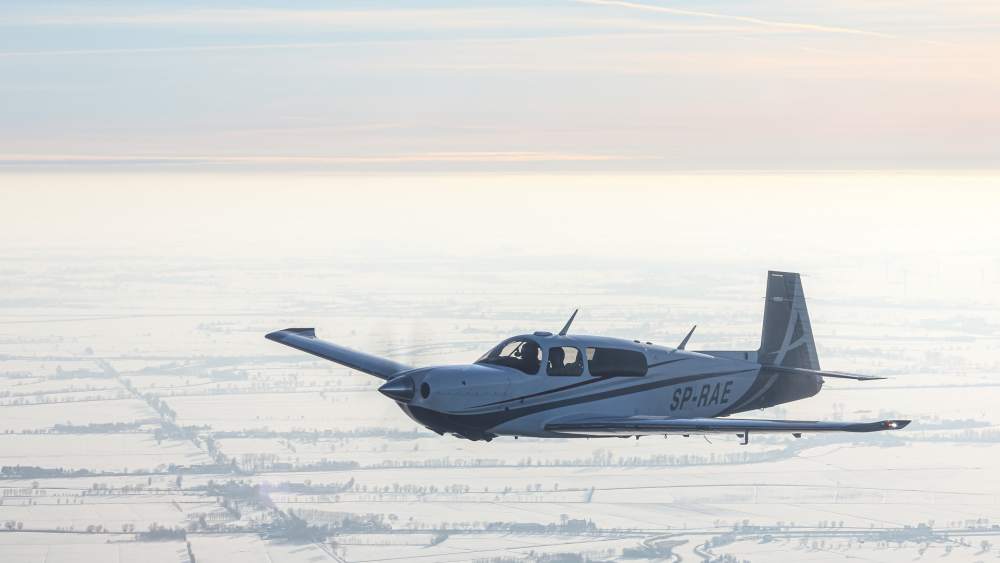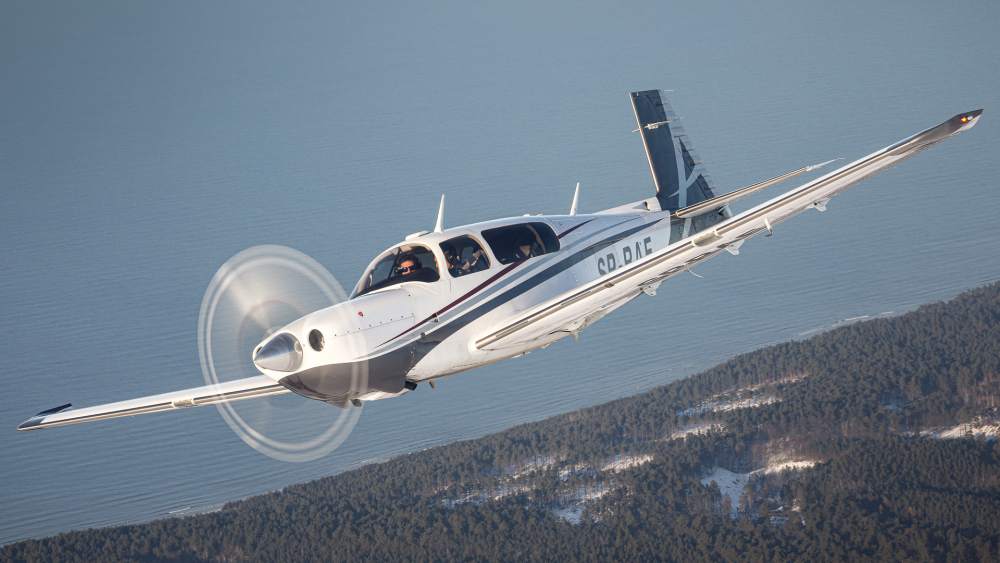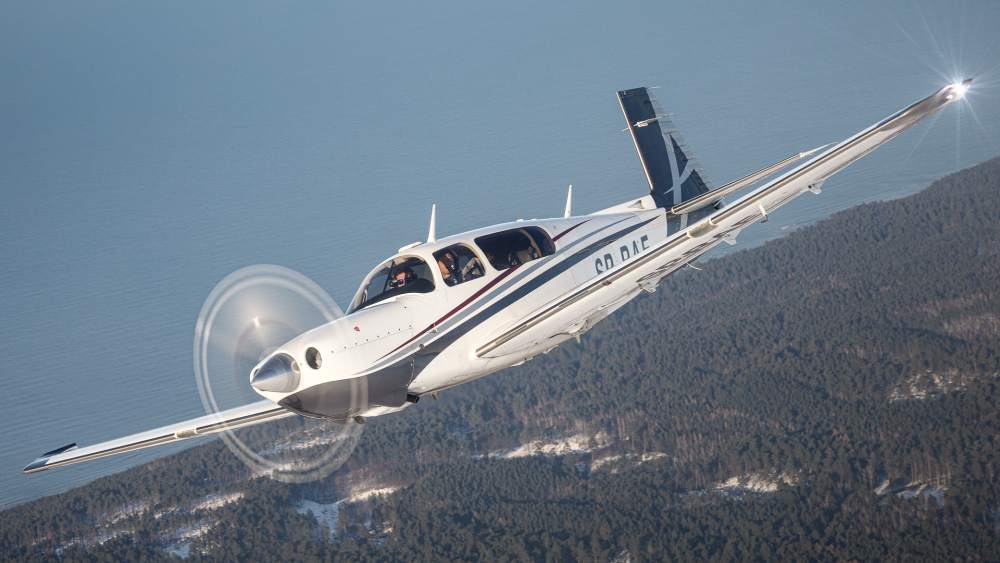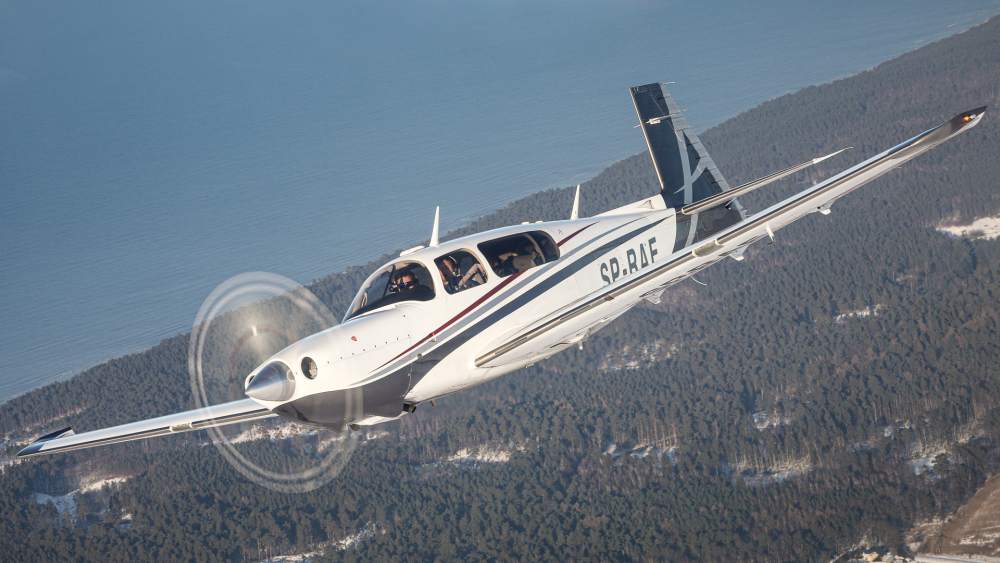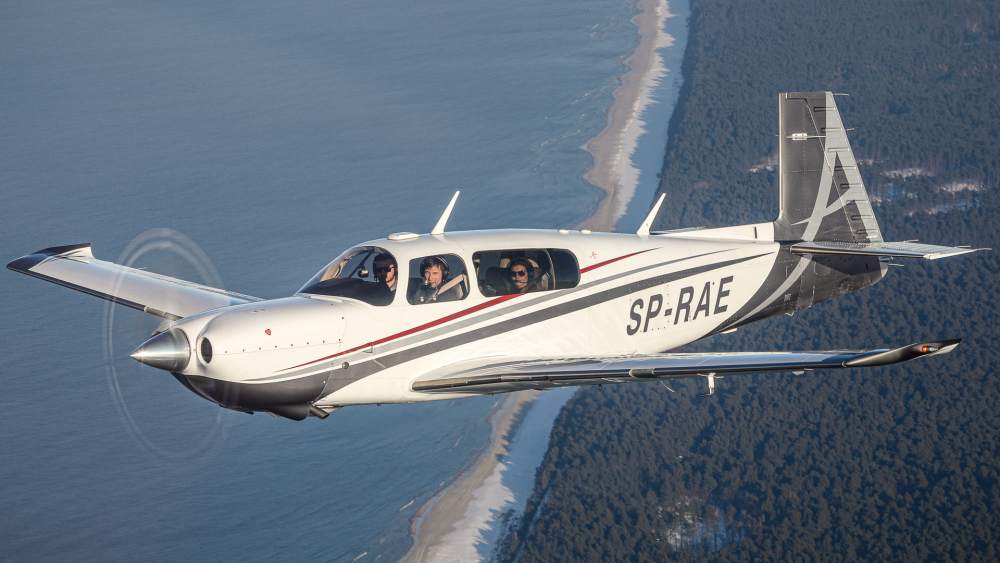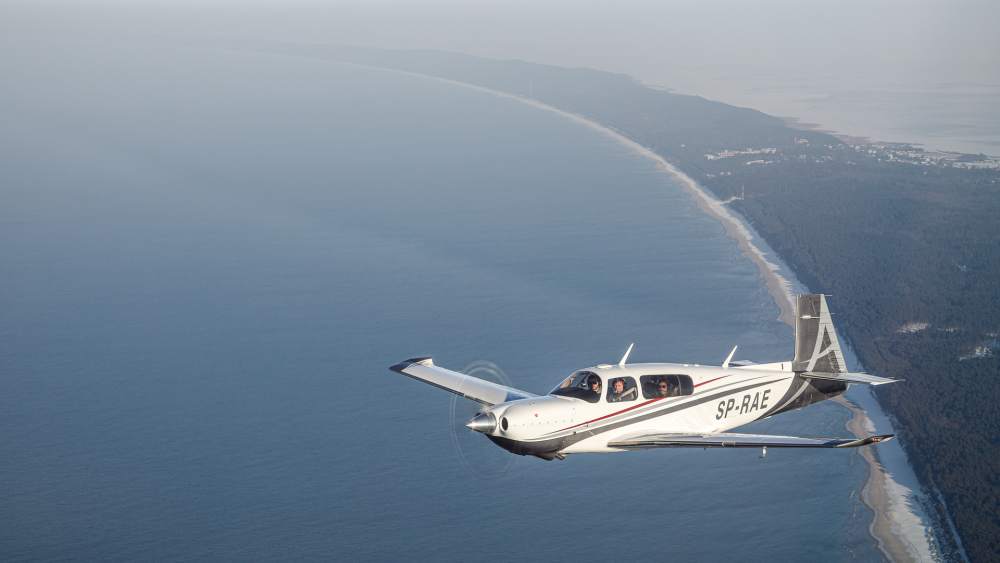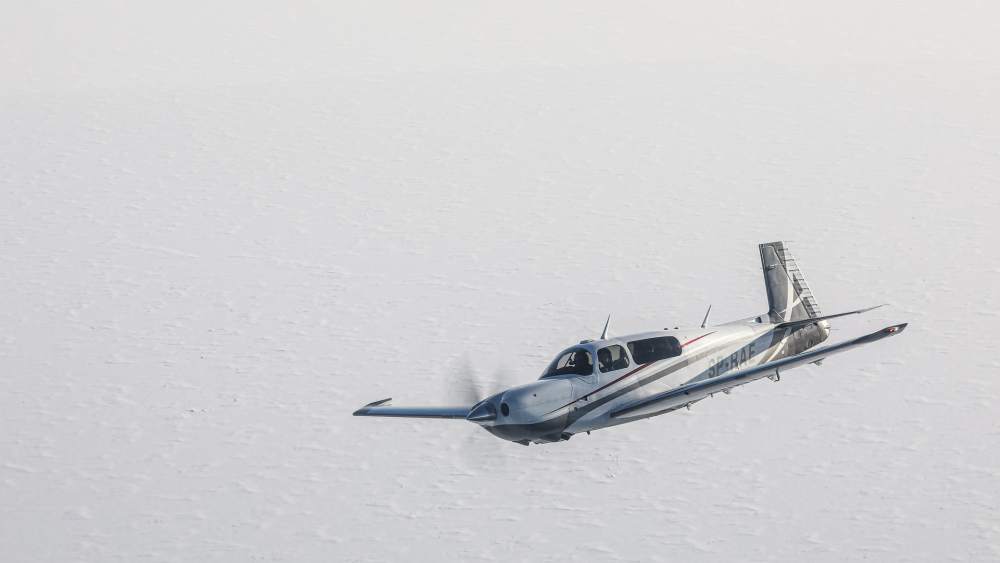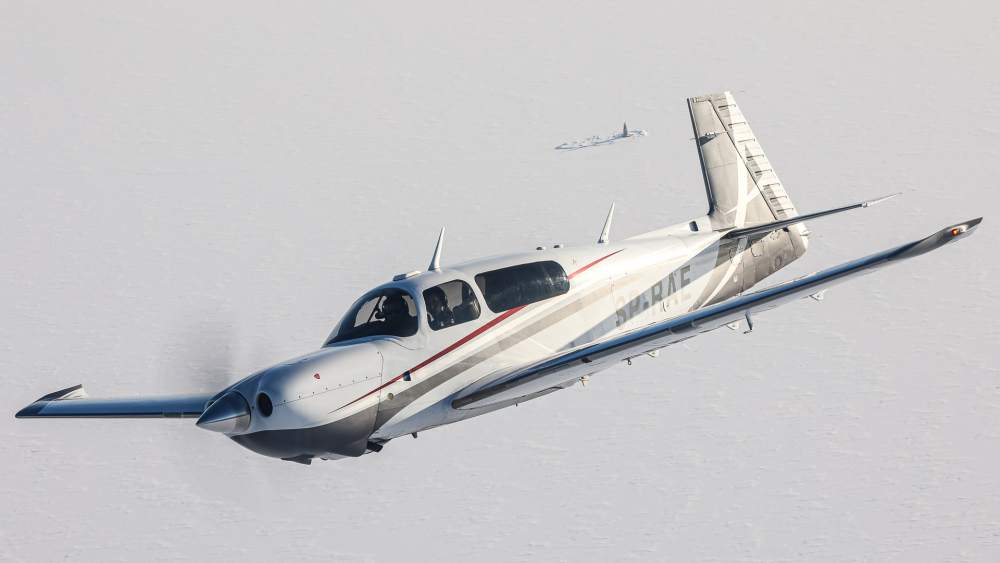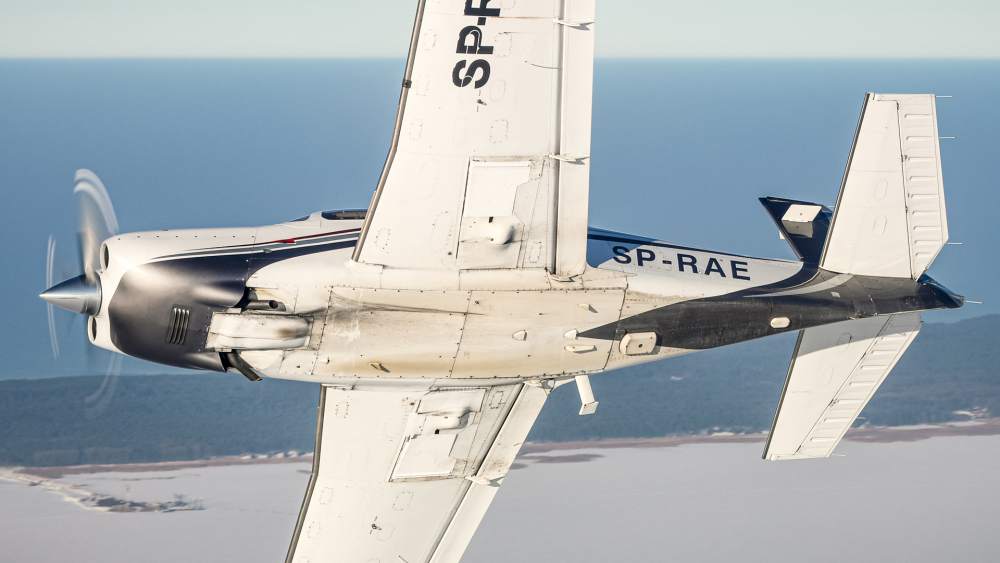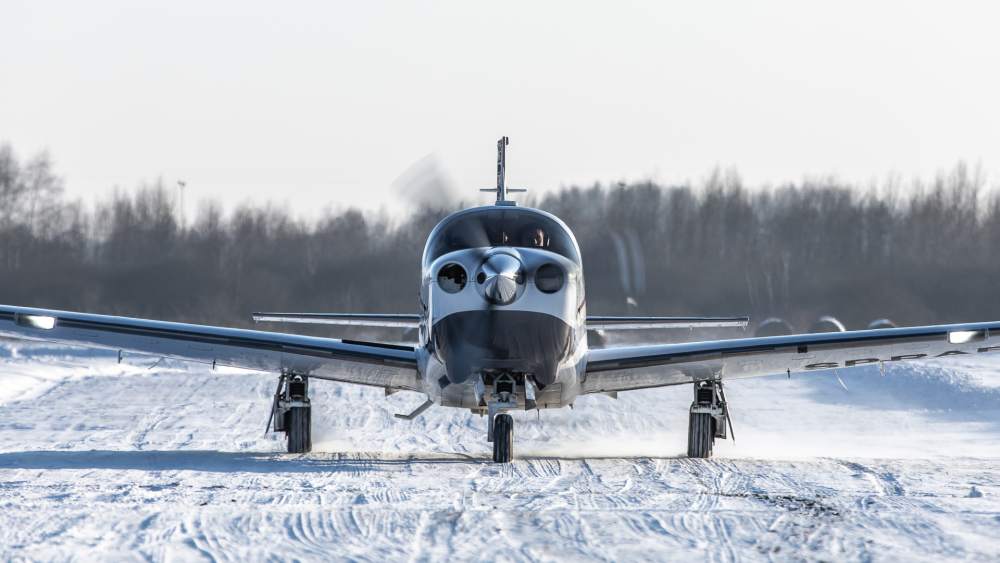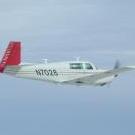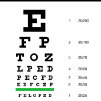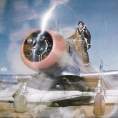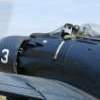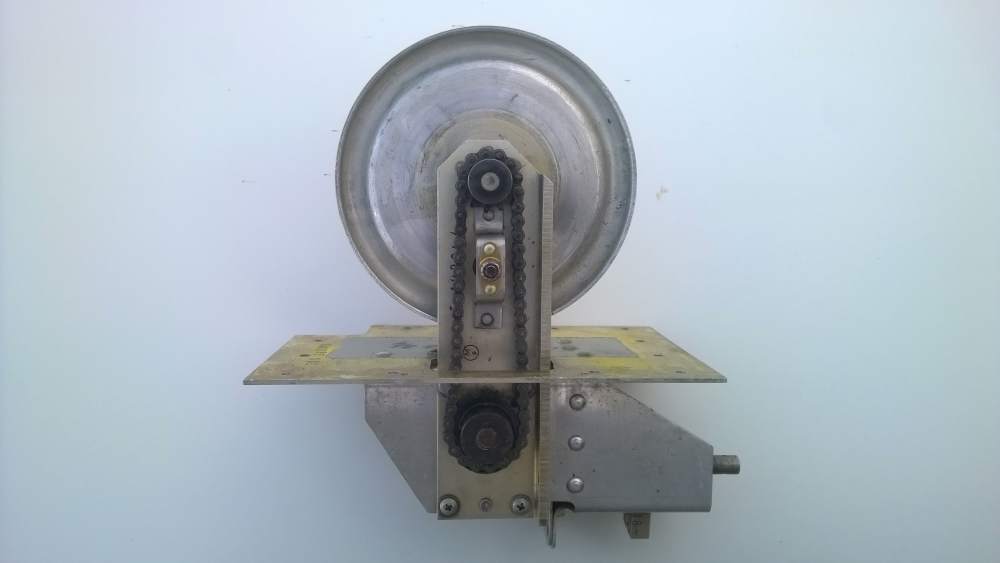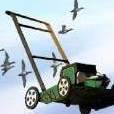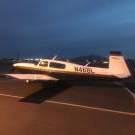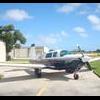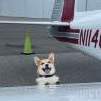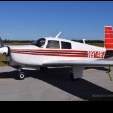Leaderboard
Popular Content
Showing content with the highest reputation on 02/28/2021 in all areas
-
12 points
-
I chose invulnerability as the one I'm most susceptible to. But for me, it's not so much "It won't happen to me", as it is "What I'm doing has increased risk, but I'm going to do it anyway, because a lot of other reasonable people do it too, and I've done it in the past without coming to grief". I speak here of reasonable assumption of additional risk, e.g. flying in IMC, flying over mountainous terrain, deliberately performing slipping and skidding stalls as part of CFI training, and so forth. Lots of people do these things. The risks are reasonable. But sometimes people die doing these things, and the honest truth is that I don't have to do any of them. In fact, I don't ever have to get in an airplane at all. My mild beef with the way the FAA treats the five hazardous attitudes is, the textbook stuff seems to treat them as binary things, when in reality they span a spectrum of increasing risk. Invulnerability is an example of this, as discussed above. Another: I submit that a certain amount of machismo and "I can do it!" attitude is required to be any kind of pilot at all. A person with absolutely zero I-can-do-it attitude is never going to climb into the left seat for their first lesson. If I was writing the textbooks, I'd say the five attitudes in excess are of concern, but that all humans exhibit all those behaviors to some degree from time to time. It's part of what makes us human.5 points
-
Glad you found some extra speed. But beware- From what I have seen, many of these vintage planes have plenty of worn pieces in the system and plenty of them have had the control linkages meddled with more than once over the years.... A complete (proper) rigging will also include: 1. setting the position of the aileron center links pivot below the floor; checking the aileron/rudder interconnect spring setup. 2. setting each aileron bell crank to its neutral position 3. adjusting the aileron up and down throws (bell crank stops) 4. adjusting the flap stops and checking degrees of each flap at max extension 5. setting rudder to neutral position and adjusting rudder throw (stops) in both directions 6. checking elevators are equal and checking the throws (stops) If you are just using the boards to set aileron positions without checking the positions of the bell cranks, you are most likely changing the amount of control travel you have (reducing one aileron travel and possibly increasing the other). In my limited experience, if the aileron bell crank stops are not set properly after [edit] adjusting the centered aileron trailing positions, you’ll end up with uneven aileron throws. The TCDS and the service manual have everything you need if you have travel boards in hand- be sure to follow the process form beginning to end (It’ll take all day). I’ve done 6 planes so far, and have yet to encounter even one where anything was even close to spec. You can set it up to fly straight, but you might not be contacting the bell crank stops on each side in each direction, and may not have enough control throw.4 points
-
4 points
-
3 points
-
3 points
-
LOL! But, I'm not the suing kind of guy. As long as I get all the medical costs covered, I'm good.3 points
-
2 points
-
I see now that Dr. Susan Northrup has been appointed the new Federal Air Surgeon. I hope to see good things coming as she was the SE regional and before that worked for the airlines getting pilots back in the air. She wants to move away from snail mail to e-mail and getting faster responses. From what I have seen of her in the past, she has a pretty common sense approach so I hope things will improve.2 points
-
Not saying there isn't a special washer, but the voltages generated will be cancelled out as long as both sides of the star washer are at the same temperature; which is pretty certain! Additional thermocouple trivia/minutiae: Common misconception is that the thermocouple voltage is generated at the junction between the two different metals; that is NOT true. If you think about it, it can't be because you would have some, albeit small, voltage across close to zero ohms which would generate an enormous current! The voltage is generated along the length of the two wires; since the wires are different metals, the voltages generated are slightly different. That difference is the thermocouple voltage. This is the reason for both aging and why there is 'thermocouple wire' and 'thermocouple extension wire' available. Thermocouple wire is highly purified and homogenous. Extension wire, not so much. The reason for aging is that the wire's remaining impurities migrate over time, in part due to the temperature difference along their length, and thus change the voltage generated. Thermocouple extension wire operates at a much lower temp (usually room temp) over its entire length.2 points
-
2 points
-
That's a Mooneyspacer @sekomel Maybe we can get some more details of the flight. In English.2 points
-
No It doesn't have radar altimeter. And yes flying 100-110kts was hard. We where constantly over speeding this poor Socata2 points
-
Me thinks you had a bad AP doing the installation. While you’re at it, check the probe wires are not cable tied together with the ignition wires, another amateur mistake. And your fuel flow sensor is horizontal with no 90° bends on in/out ports.2 points
-
I'm just about ready to start logbook number 11. I like the size and color of the ASA "The Standard Pilot Logbook". I only carry the last one with me. Since I need to manipulate the data in all sorts of ways and use a Mac, I wrote a logbook application on 4D a number of years ago. It comes in handy all the time. It does require me to record in both the ASA log and the computer log, but that doesn't take too much time. I am a year behind on totaling the handwritten one, but the 4D database is up to date. So far 6,259 entries.2 points
-
I have 4 pro log books now...I decided a few years back to just make one entry per year....I will never have to buy another one...LOL One entry for work flying and one entry for GA flying per year....I measure once and cut with an ax.....2 points
-
2 points
-
The inflatable ones from Bob fields work great. It significantly cuts down on noise in the cabin as well as CO (if you are seeing any PPMs on your meter).2 points
-
Had a J owner friend volunteer to help with the rigging of my 74F. Prior to checking it out, I was getting no more that 130 KTS IAS on the speedometer. I flew up to his heated hangar today (we are in Canada. Heat is important in February) and using his travel boards, did the following: - set both ailerons to 0 degrees (one was +2, other was -.5) - set flaps to -1 degrees (from 2 degrees on one to 0 on the other) - rotated the exhaust towards the rear (it was almost pointing straight down) - rotated the Lasar tie down rings 90 degrees (I had them pointed to the back) - adjusted the trailing edge on the rudder (I was requiring to use left rudder to keep the ball cantered. The trailing edge was bent to the pilot side substantially) - adjusted the cabin door so the leading edge sealed better to the fuselage (there’s was a 1/8” step between the door and the fuselage . Total time, including the BS sessions and checking out his panel improvements was around 2.5 hours We took our planes for a rest flight after. The result was a 138 KTS Indicated airspeed! TAS resulted in 147 KTS, which is right in line with the POH expectations. My aircraft hasn’t been washed or waxed in months, so I’m looking forward to giving her a bath once the weather warms up to see if I can’t break the 150 TAS mark. It’s worth taking at look at your rigging for an easy speed pick up.2 points
-
2 points
-
Hey HRM - definitely insulate first. Then you’ll have your choice of by which means you want to control the environment more effectively and efficiently. We’re looking at doing the same for our garage a little up the road here. It’s wonderful and we spend lots of time in the spring/fall doing projects or the kids playing in there (I have a workshop in the garage), but come winter or summer, we don’t spend nearly as much time as we’d like doing stuff because of the Elsa / Lucifer effect. We’ll probably end up better insulating it (doors, floor and ceiling need it), and doing a ductless split unit. The insulation will probably save on the heating and AC losses for the finished upstairs over that garage a bit. Also - the giant harbor freight industrial fan works awesome to get air circulating and really does help in the summer.2 points
-
Just make sure it's not too similar to "Amarillo by Morning" or you'll make George Strait very unhappy.2 points
-
Surprised get Home -itis was not listed by the FAA as its discussed plenty at the airlines.2 points
-
One Niner Diner at Paso airport is open with indoor/outdoor patio seating...............very nice too!!! Some of us were there New Years Day.2 points
-
2 points
-
2 points
-
Sure would be nice to have a thin blade top prop available for the bravo... From memory you said the plane is already over tbo?2 points
-
I am a hard don't tell me it can't be done! Not in the sense I don't listen and learn from people I look up to because I do. BUT, if someone tells me it can't be done and it is possible to do then you bet your ass I am going to do it! I posted this before but I thought it fit in here. I had nice talk with my private/multi instructor. Reminded me of the day I got my private. Like everyone that gets their pilots licence i was excited and I was hanging around the flight school, I couldn't get enough. I had flown only a 152 and I thought it was the best thing since sliced bread even though i knew almost everything out there was bigger faster etc. I was talking about my solo flights and on one of them I climbed to 7000.Then in the background this guy that reminded me of Fat Bastard from Austin Powers said "I can't believe you got it that high". I asked why not the book says it has a 14,700 ceiling. he starts laughing just like the Fat Bastard and said "no way it would ever get that high"!Remember I loved the 152 so i am like Later that day I rented the 152 filed a VFR flight plan so it would show up on flight aware. Filed KASH-KCON-KASH at 14,500. I called ground copied the flight plan and he cleared me to taxi. Halfway to the runway he asked me what I was doing so I told him the story. He clears me for take off and said good luck. I am thinking why doesn't any one think it will make it. I get handed off to approach and then they ask me "what are you intentions?" I tell him and he said with a laugh "altitude your discretion. around 10,000 I got handed of to center, she could care less and was rather busy. Knowing that you can't be above 12,500 for more that 30 min when I passed 12,500 I started the timer. It took 21 min to go from 12,500 to 14,000. Took pictures outside and of coarse the altimeter. I told center I would like to descend to Nashua"proceed as requested. handed back to approach and I said, I made it to 14,000. He said, I know we were all watching and I lost $10 buck to a bet! Back to tower He clears me to land and said I see that you made it up there. he asks what was the point of that? I said because Cessna said I could and someone told me I couldn't.That following Saturday I Showed Fat Bastard the proof and he got mad that proved him wrong. It was hilarious! looking back at it now he reminds me of my 9 year old right before bedtime.In his defense it most likely would not have made it there with him in it.2 points
-
Great article! I learned a lot, thanks Kerry McIntyre! Are You Positive? PC Systems ShopTalk - June 2018 by Kerry McIntyre This month’s ShopTalk will take the reader deep into the mysterious world of PC (positive control) aircraft systems and break down the components and how the system works. This will lead us to the troubleshooting process of getting this system to work properly. Most of our pre-1977 Mooneys originally came with a PC system as a wing leveler, a poor man’s autopilot. This system, manufactured by Brittain Industries, is powered by vacuum pressure that passes through the turn coordinator to a pilot valve located behind the pilot’s instrument panel along with four rubber‑cupped vacuum servo cans and a thumb button (cutoff valve or switch) in the pilot’s control wheel yoke. For a schematic overview, see Figure 1. In 1977, Mooney replaced the pneumatic thumb button with an electrical switch and a remote solenoid valve (see Figure 2). From an engineering viewpoint, the PC system is elegantly simple. The muscle to move the control surface (rudder or aileron) is the BI-706 which Brittain refers to as a servo assembly. Technically, this is not a servo but rather an actuator as there is no feedback mechanism. Still, we’ll take Brittain’s lead and call it a servo. The BI-706 consists of a 4.5-inch diameter can with a rubberized cup fitted to the open end (see Figure 3). As pressure is reduced in the can through the vacuum tube, the rubber cup membrane is pushed into the can by atmospheric pressure. A circular plate, affixed to the membrane, attaches to and pulls a cable (rudder) or a chain (aileron) to move the respective control surface. Each aileron has one servo attached to the control arm in each wing. In the tail cone near and below the battery box are two servos attached to the rudder push-pull tube These two servos work against each other depending on how vacuum pressure is routed to them via the turn coordinator and the co-located roll-trim valve. All four servos are interchangeable. Some planes also came with a servo on the retractable step. This servo has the same design as the others but has a longer stroke and a larger diameter - more force. Therefore it is not interchangeable. A thumb button (cutoff valve) is installed on the left side of the pilot control wheel. This thumb button when depressed allows vacuum to bleed off thereby releasing the control servos’ pull on the controls. It has no effect on the step servo. If this button is removed from the yoke it allows for hand flying with no vacuum forces on any kind hindering the pilot's input. The turn coordinator is dual powered, both electric and vacuum operated, so an electrical failure does not affect its operation or that of the PC system. Vacuum pressure is ported off of the vacuum regulator and directed to the turn coordinator. One line will go through the pilot valve and the other will go directly to the turn coordinator. There are 2 air filters that filter the air entering the turn coordinator. These are mounted behind the pilot’s instrument panel. We will change these filters every 1000 hrs, but back in the 70s when people smoked in their plane they were changed every 500 hours. When a PC-equipped aircraft comes in for an annual we look for clues that the PC system is malfunctioning: Is the roll-trim knob turned full stop either direction or is the yoke buttonremoved? When we see this it is time to ask the pilot: how well the system works, what does it do in flight? Once we have determined the PC system needs help (and most do), we pull the top cowl and place the plane on jacks with the wheels free from the ground. Then disconnect the vacuum pump from the firewall and connect the vacuum regulator to an electric standby vacuum pump powered by a remote battery. With the electric vacuum pump running we can determine the response of the PC system to the roll-trim knob on the turn coordinator. Typically the system biases to one side or the other and will not pull on the controls evenly, left and right. There are a number of things that can go wrong as these systems age. Most common is one or more rubber cups on the four servos will be cracked/ torn and leaking. This causes an imbalance between the servos allowing a good servo to overpower a torn or leaking servo. If the step will not retract or retracts partially this is often a servo cup leaking also. Once in a while, we see the tubing that provides vacuum pressure pulled off the servo because the fitting on the line broke. It is very rare to find the turn coordinator control or pilot valve causing problems in the system, but they can fail as these systems age. There are two o-rings in the pilot,s cutoff thumb button that can deteriorate and weaken operation by constantly bleeding off vacuum pressure. The rubber tubing from the pilot valve to the thumb button can crack and leak vacuum pressure where it goes into the control wheel shaft behind the instrument panel. When troubleshooting this system on jacks, first look at the rubber items: servo cups, hoses, and the thumb button. If you question the pilot valve, then bypass it and run straight vacuum directly to the system to see if it works. If you question the thumb button then disconnect it from the pilot valve and plug that line to see how that affects the system operation. A year ago, an M20E was in the shop for some new radios and instrument panels. Once the installation was complete, the PC system was checked for proper operation. Low and behold, it did not work at all! After repairing a broken line at the right aileron servo it still did not work. The next thing was to bypass the thumb button by capping off the line to the pilot valve, and guess what? Part of the system operated, just not completely. When the pilot valve was bypassed, the system did a hard right turn - now we are getting somewhere. Now it is time to find out which servo or servos were causing the problem. We already know the pilot valve is FUBAR, so by bypassing it, we can troubleshoot the rest of the system. Most commonly the rudder servo directly under the battery box will be rotten and sure enough, it was. This PC system needed a pilot valve and a servo replacement. In the 70s and 80s, one could buy just the rubber cups for the servos, but the FAA now requires repair from only an approved repair facility and so a rebuilt servo from Brittian Industries was purchased for $175. The pilot valve was also exchanged for another. When the system was tested, guess what?…. It still did not work correctly. At this point we found the tubing going to the thumb button cracked under a clamp that secures it to the control yoke shaft just as it enters the shaft. The thumb button was also missing one of the o-rings that seals the vacuum pressure. Both o-rings were replaced. A new test was run on the system and Voila!, it worked perfectly. When the roll-trim knob was placed in the middle position all the controls were in neutral and a roll to the right was just as fast and complete as a roll to the left. Our 48-year-old PC system was finally up and running correctly. One thing I realized as during this troubleshooting process was that no one knew anything about these systems but were all fascinated to understand how it worked. This came as a bit of a surprise to me. See, when I got into GA as a young A&P in the 70s, I learned about these systems from all those old guys that I worked with. Well, it seems those old guys are long gone and this knowledge that they passed on to me is not being passed on to the next generation very well. It also seems that I’ve become one of those guys. It must be the aviation circle of life (Hakuna Matata). That’s why I write the MAPA ShopTalk column and have the drive to continue to write it. I remember talking to Bill Wheat years ago about all his knowledge and passing it on in a written form. Bill started with Mooney (in the late 50s) as a test pilot, then an engineer and he knew darn near everything about the Mooney aircraft systems. However, he was not interested in writing anything down and that is a shame. Bill is long gone (along with many of those other old guys) and I am grateful he shared some of his stories about the development of the M20 line of aircraft. Since that M20E was repaired, Brittian Industries has ceased operation and is for sale due to the death of their chief engineer. With any luck, someone will buy the company and continue to offer parts so we Mooney aficionados can keep this fleet of aging aircraft operational. If you have any questions about this article or another Shop Talk article, feel free to email me or call me at my aircraft repair shop: 307-789-6866. You can also read other ShopTalk articles on this website. Until the next ShopTalk, enjoy flying your Mooney.1 point
-
Went to KCMA for breakfast this morning. Three Mooneys pulled up next to me but didn't stay long. Any of them Mooneyspacers by chance?1 point
-
1 point
-
Putting life into perspective....... I’m 7 1/2 years away from 80 (I hope ). How the heck did that happen so dang fast? It’s not the end of my world, but I can see it from here!1 point
-
I have a friend who just turned 97 and has liability insurance on his 210. He also has a 3rd class medical.1 point
-
1 point
-
There’s a stop pin that rides in a slot. If the arm rest pivot bolt is loose, the pin might not stay in the slot. I’d see if tightening the nut helps. If not, you’ll have to take it off and see what’s wrong. This picture is from a J but it should be the same as yours.1 point
-
He's posted here before and answered questions after some of his other vids were cited.1 point
-
Apparently it is a common issue then. I closed the hangar door yesterday and turned them on. With the lines horizontal, the beam, which is an eclipse (reminds me of a cat's eye) has the two foci major axis on the vertical. Thus a good portion of the beam is on the ground right in front of and indeed below the wing and what is out there is very narrow. Obviously turning it to the lines to the vertical will cause a broad beam which is diffused by the width, making it a true taxi light. You're not helping telling me what a PIA those Allen screws represent!1 point
-
1 point
-
The important stuff is recorded on any IACRA application. Your medical has some information on it. I haven’t written in a paper logbook in decades. I keep a folder with IPCs, BFRs (I know they call them flight reviews now) and such. I wrote my own logbook app in Delphi in the early 90s. As much as I liked it, it was getting hard to maintain. I exported it all to ForeFlight. I make a paper backup of the ForeFlight log about once a year. I also keep the .CSV files it exports, they are a lot easier to deal with than the paper.1 point
-
I’m new to Mooneyspace but have been flying 201s since the late 90s CFI/CFII - I now own a J model in the Florida Panhandle.1 point
-
Funny I like how both men in the plane duck instead of flying the plane. I hate to be a Monday morning quarter back but he could have flown between the trestles and still crashed it would have been more believable. Well I digress and my career as a critic never really took off.1 point
-
The limit of the C152 climb performance... is the one hour time limit at most flight schools... With two pilots on board, half the flight hour elapsed before stall practice could begin... 108hp for a NA C152... How much excess hp is available? Best regards, -a-1 point
-
1 point
-
Not me, but my dad got his ppl there about 40 years ago. There was an awesome little mexican restaurant on the field. I remember eating some great tacos to celebrate surviving power on stalls with my dad and his cfi. If I remember right, the restaurant was partially dome shaped adobe or stucco... What restaurant is there now?1 point
-
Damn, I just risked my flying future! I should have read this earlier. I didn't go to the airport to work on the plane, waiting for parts. But I foolishly rode 30 miles on the bike...1 point
-
Thanks a lot for your point of view. It definitely helps and supports my original thoughts. I was actually stepping away from this plane but now Im back on it. I will let you guys know how it ended up and post pics when I can call it mine. A very thorough pre buy would be planed anyways to lower the risk as much as I can.1 point
-
@PeteMc, this is the X-Grip, doesnt matter what tablet you go with, chances are it will fit. I use my iPad at home more than my PC, when flying I just put it in the X-Grip, case and all1 point
-
So, not quite Florida, but very close over the border into Georgia (a short flight in your Ovation!) is Saint Simons Island (KSSI), which is a great destination by itself, but there's also a great BBQ place that is a 1/4 mile away and easily walkable from the FBO. (Which is incredibly friendly) Would also greatly recommend St. Augustine (KSGJ)... cheap fuel, and Uber/Lyft to Old Town. Great day trip. St. Pete-Albert Whitted (KSPG) is right on the water and right next to the excellent Salvador Dali museum, and around great walkable restaurants and shops. Also the Dale Chihuly glass blowing studio and gallery is nearby. Once you get more experience in your Mooney (and if you feel you can get onto a 2400 foot runway safely with no room for error), Cedar Key (KCDK) is legendary and is a great walkable area. Stop by Orlando Executive (KORL) and Uber/Lyft a few blocks over to see our great downtown area near Lake Eola. Tons of great food and shops. The Florida Keys (KEYW and KMTH) are no big challenge, I wouldn't hesitate to visit them soon. Nice, long runways and not terribly busy or complex. The Bahamas is more of a challenge, mainly for paperwork reasons.1 point
-
1 point
-
1 point

